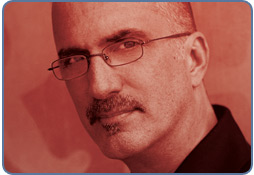
Join the National Marrow Donor Program.
Stop - this doesn't involve a big needle being jammed into your hip. Please keep reading . . .
In tribute to 11-time Grammy winning saxophonist Michael Brecker, M-Audio will pay for the testing of as many people as possible at any National Marrow Donor Program center.
The Screening involves only a blood test to identify your tissue type—which is completely different than blood type. It’s easy to get screened at any donor center of the National Marrow Donor Program (NMDP). Find the nearest center linked here.
The cost for the test is generally $40 to $95, but the fee will be waived if you tell the center you are getting tested in connection with M-Audio. Testing is already free for several minority groups. Below are links for some minority groups:
If you are an African American please follow this link to the African American Health Advisory Committee for additional information.
If you are a Jewish American please follow this link to the Gift of Life Bone Marrow Registry for additional information.
If you are Latino or Hispanic please follow this link to Icla da Silva Foundation for additional information.
M-Audio states:
Testing only takes a couple of minutes and, at worst, is as painless as giving blood. Blood is drawn for testing and a consent form is filled out. In some instances, a buccal swab (a sterile Q-tip which is rubbed along the wall of your inner cheek to collect cells) is used.
If you match and are asked to donate the process:
As a result of new technologies, the term “bone marrow transplant” is in part a misnomer. In earlier years, marrow had to be extracted from a donor’s marrow. Today, at leading cancer centers like Memorial Sloan Kettering, the collecting process rarely occurs this way. A donor is simply connected to a machine through an IV that separates and harvests the blood stem cells from the donor’s blood before the blood returns to the donor through a second IV. Instead of being tethered to a machine for a few hours, some still prefer direct marrow collection—where medical technology has also improved. Following anesthesia, marrow—which continually replenishes every 4-6 weeks—is withdrawn using fine hollow needles in the hip. The donor may be sore around the area of the withdrawal for a few days.
Hat tip to Blogan for the link.
Hat tip to M-Audio linked here for additional information about the program.
Photograph of Michael Brecker courtesy of M-Audio.
Follow the Amazon link to listen to samples of Mr. Brecker's music.





No comments:
Post a Comment